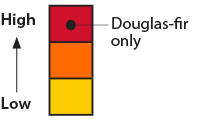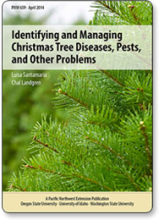Before bud break:
- Reddish-brown spots on upper surface of current-year needles; distinct border between diseased area and healthy green tissue
- Swollen, elongated, light-tan fruiting bodies on the underside of symptomatic needles
During bud break:
- Fruiting bodies rupture underside of needle, releasing a mass of spores.


